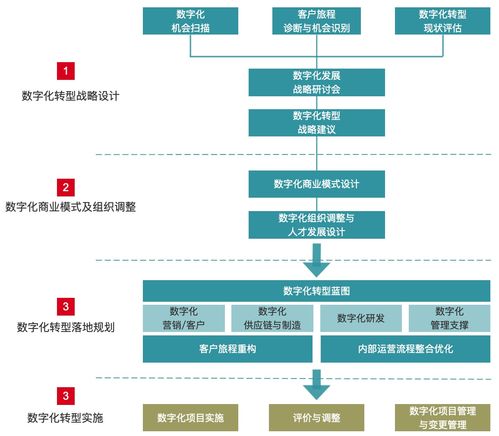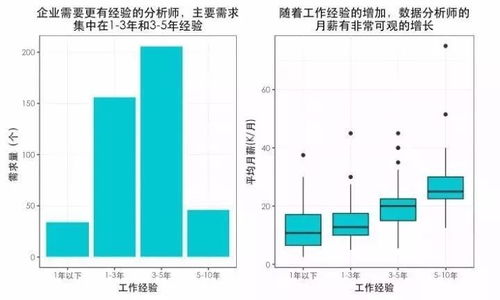一、概述
今天分享几个关于MySQL数据类型的查询,具体如下:

- 在 MySQL 数据库中查找最常用的数据类型
- 查找 MySQL 数据库中的所有数字列
- 查找 MySQL 数据库中的所有字符串(字符)列
- 查找 MySQL 数据库中的所有日期和时间列
- 查找 MySQL 数据库中的所有枚举列
- 查找 MySQL 数据库中的所有空间数据列
- 查找 MySQL 数据库中的所有 JSON 数据列
- 在 MySQL 数据库中查找大对象 (LOB) 数据类型列
- 在 MySQL 数据库中查找具有大对象 (LOB) 数据类型列的表
二、相关SQL
1. 在 MySQL 数据库中查找最常用的数据类型
select data_type,
count(*) as columns,
cast(100*count(*)/sum_all.columns as decimal(36,2))
as percent_columns,
count(distinct concat(col.table_schema, '.', col.table_name))
as tables,
cast(100*count(distinct concat(col.table_schema,'.',col.table_name))
/ sum_all.tables as decimal(36,2)) as percent_tables
from information_schema.columns col
join (select count(distinct concat(c.table_schema, '.', c.table_name))
as tables,
count(*) as columns
from information_schema.columns c
join information_schema.tables t
on c.table_schema = t.table_schema
and c.table_name = t.table_name
where t.table_schema not in ('information_schema', 'mysql',
'performance_schema', 'sys')
and t.table_type = 'base TABLE'
) sum_all on true
join information_schema.tables tab
on col.table_schema = tab.table_schema
and col.table_name = tab.table_name
where tab.table_schema not in ('information_schema', 'mysql',
'performance_schema', 'sys')
and tab.table_type = 'base TABLE'
group by data_type,
sum_all.columns,
sum_all.tables
order by columns desc;
说明:
- data_type - 没有长度或精度的内置或用户数据类型,例如 int、varchar 或 datetime
- columns - 具有此数据类型的数据库(模式)中的列数
- percent_columns - 具有此数据类型的列的百分比。行总数为 100%
- tables- 数据库(模式)中具有此数据类型的表数
- percent_tables - 具有此数据类型的列的表的百分比。
2. 查找 MySQL 数据库中的所有数字列
select col.table_schema as database_name,
col.table_name,
col.ordinal_position as col_id,
col.column_name,
col.data_type,
col.numeric_precision,
col.numeric_scale
from information_schema.columns col
join information_schema.tables tab on tab.table_schema = col.table_schema
and tab.table_name = col.table_name
and tab.table_type = 'base TABLE'
where col.data_type in ('tinyint', 'smallint', 'mediumint',
'int', 'bigint', 'decimal', 'bit',
'float', 'double')
and col.table_schema not in ('information_schema', 'sys',
'performance_schema', 'mysql')
--and col.table_schema = 'database_name' -- put your database name here
order by col.table_schema,
col.table_name,
col.ordinal_position;
说明:
- database_name - 数据库的名称(模式)
- table_name - 表的名称
- column_id - 表中的列位置
- column_name - 列的名称
- data_type - 数据类型
- numeric_precision - 列的精度
- numeric_scale - 列的比例
2. 查找 MySQL 数据库中的所有字符串(字符)列
select col.table_schema as database_name,
col.table_name,
col.ordinal_position as column_id,
col.column_name,
col.data_type,
col.character_maximum_length as maximum_length,
col.character_set_name
from information_schema.columns col
join information_schema.tables tab on tab.table_schema = col.table_schema
and tab.table_name = col.table_name
and tab.table_type = 'base TABLE'
where col.data_type in ('char', 'varchar', 'binary', 'varbinary',
'blob', 'tinyblob', 'mediumblob', 'longblob',
'text', 'tinytext', 'mediumtext', 'longtext'
'enum', 'set')
and col.table_schema not in ('information_schema', 'sys',
'performance_schema', 'mysql')
--and col.table_schema = 'database_name' -- put your database name here
order by col.table_schema,
col.table_name,
col.ordinal_position;
说明:
- database_name - 数据库的名称(模式)
- table_name - 表的名称
- column_id - 表中的列位置
- column_name - 列的名称
- data_type - 数据类型
- maximum_length - 字符的最大长度
- character_set_name - 字符集名称
4. 查找 MySQL 数据库中的所有日期和时间列
select col.table_schema as database_name,
col.table_name,
col.ordinal_position as column_id,
col.column_name,
col.data_type,
col.datetime_precision
from information_schema.columns col
join information_schema.tables tab on tab.table_schema = col.table_schema
and tab.table_name = col.table_name
and tab.table_type = 'base TABLE'
where col.data_type in ('date', 'time', 'datetime', 'year', 'timestamp')
and col.table_schema not in ('information_schema', 'sys',
'performance_schema', 'mysql')
--and col.table_schema = 'database_name' -- put your database name here
order by col.table_schema,
col.table_name,
col.ordinal_position;
说明:
- database_name - 数据库的名称(模式)
- table_name - 表的名称
- column_id - 表中的列位置
- column_name - 列的名称
- data_type - 数据类型
- datetime_precision - 小数秒精度
5. 查找 MySQL 数据库中的所有枚举列
select col.table_schema as database_name,
col.table_name,
col.ordinal_position as column_id,
col.column_name,
col.data_type,
trim(leading 'enum' from col.column_type) as enum_values
from information_schema.columns col
join information_schema.tables tab on tab.table_schema = col.table_schema
and tab.table_name = col.table_name
and tab.table_type = 'base TABLE'
where col.data_type in ('enum')
and col.table_schema not in ('information_schema', 'sys',
'performance_schema', 'mysql')
--and col.table_schema = 'database_name' -- put your database name here
order by col.table_schema,
col.table_name,
col.ordinal_position;
说明:
- database_name - 数据库的名称(模式)
- table_name - 表的名称
- column_id - 表中的列位置
- column_name - 列的名称
- data_type - 数据类型
- enum_values - 声明可能的枚举值

6. 查找 MySQL 数据库中的所有空间数据列
select col.table_schema as database_name,
col.table_name,
col.ordinal_position as column_id,
col.column_name,
col.data_type,
col.is_nullable
from information_schema.columns col
join information_schema.tables tab
on col.table_schema = tab.table_schema
and col.table_name = tab.table_name
and table_type = 'base TABLE'
where col.data_type in ('geometry', 'point', 'linestring', 'polygon',
'multipoint', 'multilinestring', 'multipolygon',
'geometrycollection')
and col.table_schema not in ('information_schema', 'sys',
'performance_schema', 'mysql')
-- and table_schema = 'database_name' -- put your database name here
order by col.table_schema,
col.table_name;
说明:
(1)database_name - 数据库的名称(模式)
(2)table_name - 表的名称
(3)column_id - 表中的列位置
(4)column_name - 列的名称
(5)data_type - 空间数据的类型:
- GEOMETRY
- POINT
- LINESTRING
- POLYGON
- MULTIPOINT
- MULTILINESTRING
- MULTIPOLYGON
- GEOMETRYCOLLECTION
(6)is_nullable - 指示列是否可以包含空值
7. 查找 MySQL 数据库中的所有 JSON 数据列
select col.table_schema as database_name,
col.table_name,
col.ordinal_position as column_id,
col.column_name,
col.data_type
from information_schema.columns col
join information_schema.tables tab on tab.table_schema = col.table_schema
and tab.table_name = col.table_name
and tab.table_type = 'base TABLE'
where col.data_type in ('json')
and col.table_schema not in ('information_schema', 'sys',
'performance_schema', 'mysql')
--and col.table_schema = 'database_name' -- put your database name here
order by col.table_schema,
col.table_name,
col.ordinal_position;
说明:

- database_name - 数据库的名称(模式)
- table_name - 表的名称
- column_id - 表中的列位置
- column_name - 列的名称
- data_type - 数据类型
8. 在 MySQL 数据库中查找大对象 (LOB) 数据类型列
select tab.table_schema as database_name,
tab.table_name,
col.column_name,
col.data_type
from information_schema.tables as tab
inner join information_schema.columns as col
on col.table_schema = tab.table_schema
and col.table_name = tab.table_name
where tab.table_schema = 'your database name'
and tab.table_type = 'base TABLE'
and col.data_type in ('blob', 'mediumblob', 'longblob',
'text','mediumtext','longtext')
order by tab.table_name,
col.column_name;
说明:
- schema_name - 数据库的名称(模式)
- table_name - 表的名称
- column_name - 列的名称
- data_type - 数据类型
9. 在 MySQL 数据库中查找具有大对象 (LOB) 数据类型列的表
select tab.table_name,
count(*) as columns
from information_schema.tables as tab
inner join information_schema.columns as col
on col.table_schema = tab.table_schema
and col.table_name = tab.table_name
and col.data_type in ('blob', 'mediumblob', 'longblob',
'text', 'mediumtext', 'longtext')
where tab.table_schema = 'your database name'
and tab.table_type = 'base TABLE'
group by tab.table_name
order by tab.table_name;
说明:
- table_name - 表的名称
- columns - 表中的 LOB 列数
免责声明:本平台仅供信息发布交流之途,请谨慎判断信息真伪。如遇虚假诈骗信息,请立即举报
举报






